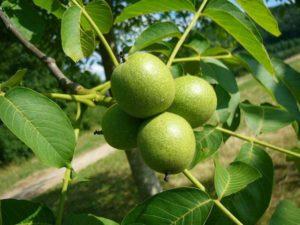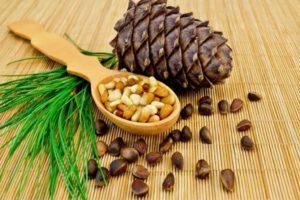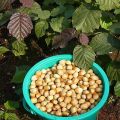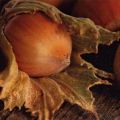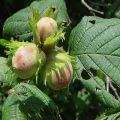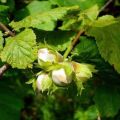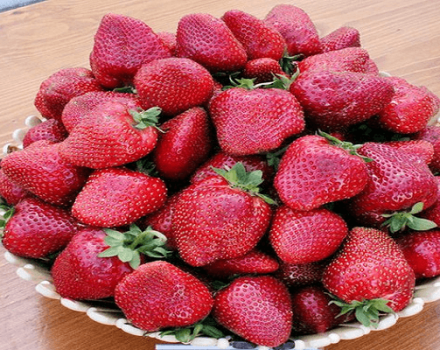Planting, growing and caring for hazelnuts in the open field, variety selection and reproduction
Lovers of nuts can be offered the cultivation of hazelnuts, which is easy to care for in a garden. You can immediately get a decorative hazel tree and harvest fruits that are good for human health. The kernels contain a lot of fat, enough protein to get full quickly. Hazelnuts are used in the form of leaf infusions, bark decoctions, which help with many diseases.
Popular varieties of hazelnuts
You should not be afraid to grow hazel in the country. In addition to the fact that the plant is unpretentious, frost-resistant, it bears fruit regularly for the 3-5th year after planting. You can choose those types of walnut that will take root in a particular region.
Common hazel
In the common species of hazel, the height of the shrub reaches 4-5 meters. Hazel:
- large jagged leaves of green color, reddening by autumn;
- brown bark of stems with transverse stripes;
- flowering occurs before the leaves bloom with catkins;
- the nuts ripen in late summer.
You have to wait a long time for fruits near the tree, sometimes up to 6 years, but then it will give nuts for a long time. Many of them reach the age of 50 or more.
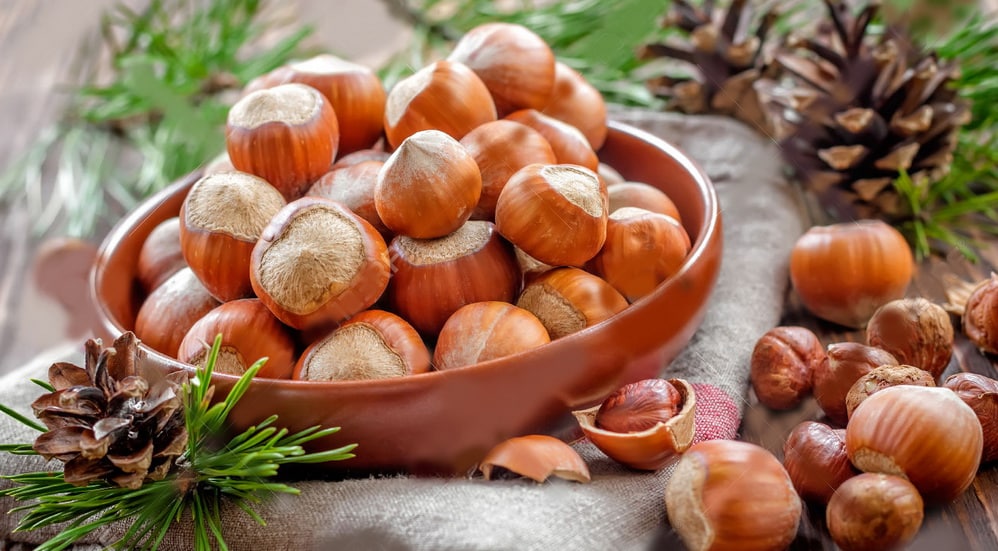
Tree or bear nut
The plant is called the bear nut because it is distinguished by its strong immunity to drought and frost. The culture grows in the Far East, as well as in the western regions of Russia.
The tree has a thick, powerful trunk with light brown bark, young shoots are covered with gray bark, slightly pubescent.
Hazel has round leaves of bright green color, but in autumn the whole tree stands in yellow, red, orange foliage. The earrings of the hazelnut variety are bisexual, so there are no problems with pollination. Pea-like nuts are a feature of the tree hazel.
Manchu
A highly branched walnut shrub reaches a height of 3-4 meters. Hazel is famous for its leaves 7-10 centimeters long, and up to 12 centimeters wide. Above they are dark green, smooth, and softly pubescent below.
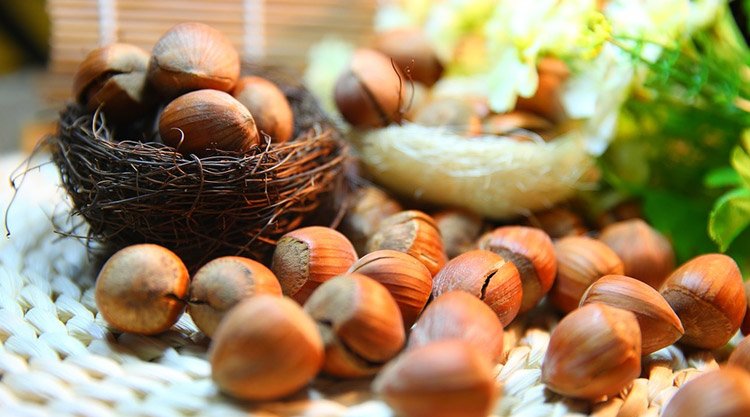
Hazel wood is reddish-white, elastic, used for the manufacture of bent furniture, walking sticks, rods. As fruits, the plant has elongated nuts.
Variegated
For the regions of Siberia, the Urals, this type of hazel is suitable. The shrub is very decorative due to the constant change in the color of the leaves. They are green only in summer, and red in spring, yellow in autumn. This is one of those varieties of hazelnuts that begins to bear fruit earlier, is not afraid of winter cold.
Red-leaved
A shrub with red round leaves on spreading branches will decorate the site. The walnut is good for creating a hedge. In early spring, female and male type earrings appear. Hazelnuts ripen at the end of summer. Its ripeness is determined by the dark brown color of the shell.
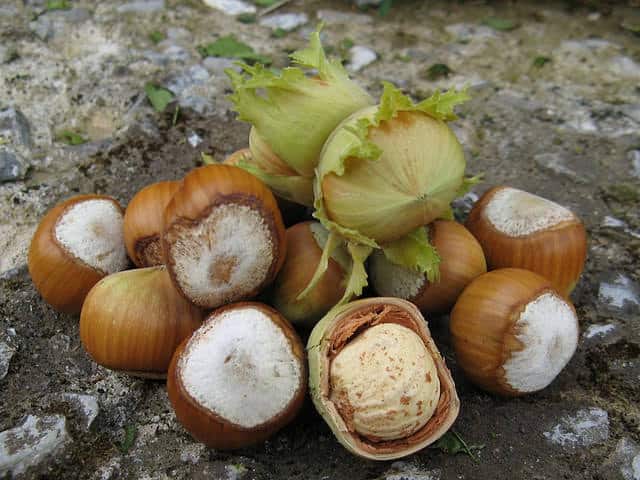
Large or Lombard nut
A more delicate type of hazel does not tolerate cold weather, and therefore there is a large variety of hazel in the southern regions. The shrub itself reaches a height of 8 meters, and its fruits are large and tasty. The variety needs pollinators to tie nuts.
Other varieties
There are other popular varieties of hazel:
- Almonds are prized for the unusual taste of the seeds. Medium-sized nuts, up to 1.6 grams each, are harvested from bushes with moderate vigor. Oily kernels are used in confectionery production, they are consumed dry and fresh.
- Cosford bears fruit early. Bushes are strong with dark green leaves in summer and red in autumn. Nuts are collected in clusters of 2-3 pieces, they are bronze in color with large kernels inside. The tree is moderately frost-resistant and grows best in warm climates.
- Ivanteevsky red hazelnuts can be grown in Siberia. A very productive variety of walnut with oblong fruits. The taste of the nut is rated at 4 points.
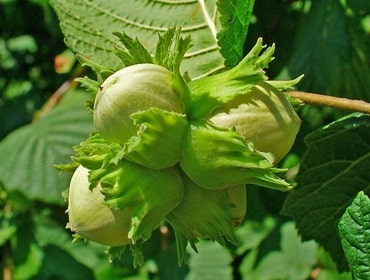
A large number of cultivated hazelnut species have been created by breeders.
How the tree reproduces
There are several ways to breed hazelnuts. This is by seeds and by a vegetative method. But the first is the most difficult and does not always lead to a positive result. It is difficult to find quality seed material. It is easier and safer to plant a shrub with layering or offspring.
Layers
A healthy lateral shoot of hazelnuts is chosen, laid in a groove, and sprinkled with earth. You can pin the branch with special tools, such as wooden hooks, to the soil surface. The remaining upper part of the fillet of hazelnuts is raised vertically and tied to a peg. It should be 10-15 centimeters long. The upper part of the fillet of hazel must be cut at the height of the 5-6th bud.

When the hazel buds begin to sprout, forming young twigs, they spud the shoot. After rooting, you need to wait another year for the young twig to get stronger. She is looked after, watered, covered for the winter. Then separated from the mother hazel bush. The disadvantage of this method is that it is very difficult to germinate a hazelnut shoot.
Offspring
Already in the 3rd year after planting hazel, healthy offspring can be separated from the root. Using a hatchet or shovel, carefully detach the shoots from the rhizome so that they have roots. You can plant several holes with hazelnut cuttings, distributing 3 shoots in each. Not all of them can germinate, so this planting will allow some of the root suckers to take root. When they start to delight with green twigs, the reproduction of the nut was successful.
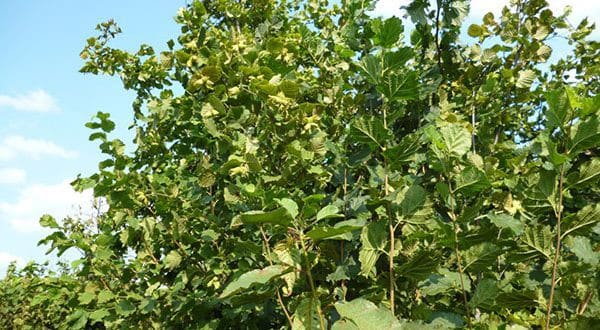
Vaccination
With this method of reproduction of hazelnuts, both cuttings and buds with a strip of bark are used. Use nut grafting in butt, split and bark. Cuttings from the upper part of hazel shoots, which have well-developed eyes, take root better. Cuttings are harvested in November, when they are going to plant hazel in spring. Organize the correct storage of the material under the snow or in the cellar in a plastic bag. The best survival rate will be in that part of the material that is grafted behind the bark in the spring.
With summer budding of hazel, cuttings can be prepared the day before the grafting procedure. The eyes are taken from the lignified part of the bush. The stock can be common hazel or variegated, Manchurian.
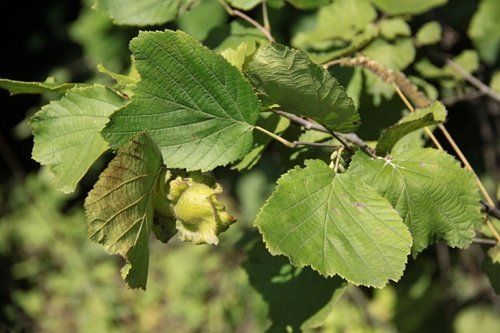
Dividing the bush
This method of breeding hazelnuts will help thin the thickened nut plantation. After digging out the bush, the hazel trees carefully divide the roots into several parts. Each should have a stump with roots up to 15-20 centimeters long.
Seeds
The material is selected independently from the best hazel bushes. The seeds are buried 4 centimeters in October at the selected site. The soil is prepared loose, nutritious by mixing humus or compost. Planting hazelnuts in spring requires seed stratification. The nuts placed in peat with sawdust are covered with moistened soil, on top with a polyethylene film and placed in a warm place with an air temperature above 22 degrees. After 2 weeks, containers with walnut seeds are placed in a room with a low air temperature, up to 1-3 degrees above zero. Hazelnut seedlings are planted in open ground in May.
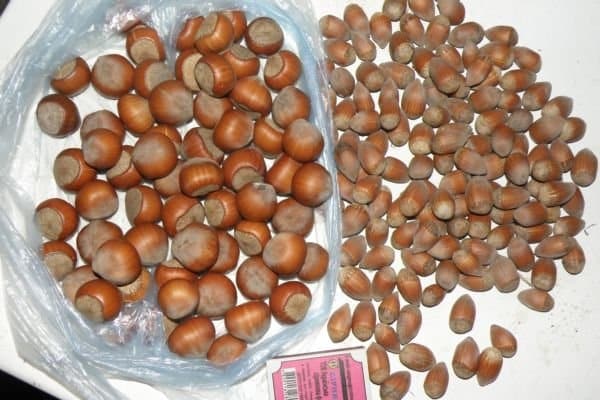
Planting a hazelnut at home
When growing any garden tree or hazelnut shrub, they try to plant it correctly. Further growth and development of culture depends on this procedure. You need to know where to plant hazel, what soil he likes.
Sapling selection
Purchase hazelnut seedlings in specialized stores. 2-year-old seedlings are best suited. You can prepare planting material yourself from root suckers or cuttings. Some dig a hazel tree in the forest. Before planting, young hazel shoots are examined for damage, rot. Examining the roots, pay attention to their condition. They must be moist without breaking the outer shell.
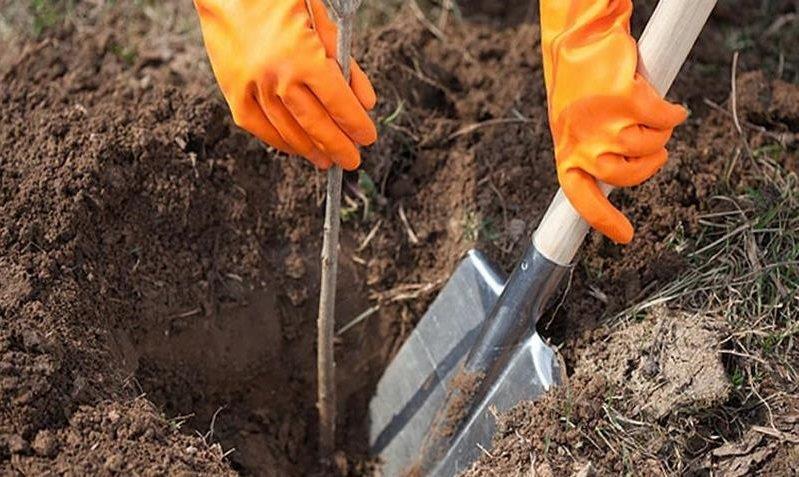
It is important that there are no dry areas in the root system of the hazelnuts. When dry, the seedling is urgently placed in water. You can carry out minor trimming of the roots. It is necessary that they have enough strength to grow further, so they cannot be cut too much.
Optimal timing
It is believed that hazel trees are best planted in mid-autumn, October-November, depending on the climate. It is necessary for the plant to have enough time before winter to adapt to new conditions. If they do not have time to plant on time, then the seedling is stored in a cool place until spring. It is necessary to control only the maintenance of moisture in the roots of the hazel. Therefore, you can place the seedlings in the ground or in a plastic bag with mandatory ventilation. Spring planting of hazelnuts is also expected, from April to May. But preference for planting hazel is given to the autumn procedure.

Choosing a landing site
A feature of hazel is that it loves places in the open field:
- lit by the sun;
- protected from cold winds;
- with soil of neutral acidity;
- where the soil is fertile.
Hazelnuts grow best in the garden on the northwest and northeast slopes. He needs space, so he does not need to plant where trees with a spreading, lush crown grow on the site. In the shade, the nut will bear fruit worse.
You can plant hazel in the country where it is necessary to strengthen the slope. But this should not be a swampy place.
Hazelnuts need soil with neutral acidity, therefore, slaked lime or fluff is added on acidic soils after digging.
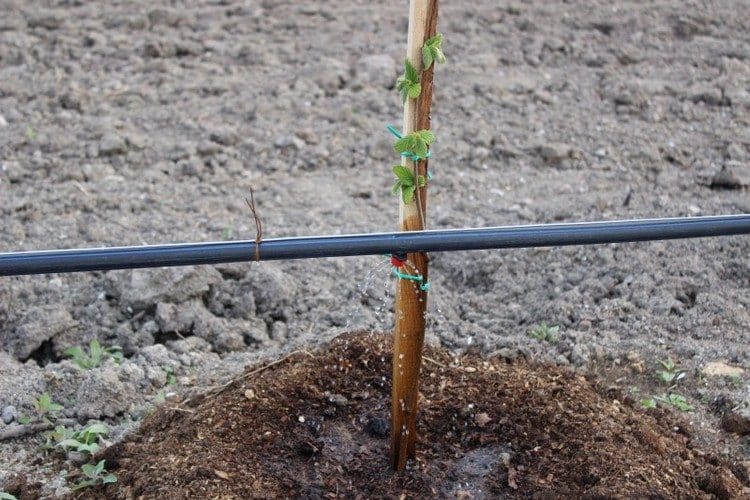
Landing technology
They begin to prepare the landing pits a month before planting. When planting hazelnuts in spring, holes are dug in the fall. The width and depth of the fossa should be 50-80 centimeters. When digging, the fertile layer, removed from the top, is laid near, and the depleted layer with useful substances is scattered over the site. The distance between plants is up to 4 meters.
First, the hole is filled with a mixture of humus, mineral fertilizers and fertile garden soil. It is useful to add a handful of mycorrhiza.Then a peg is driven into the center of a hole filled in 2 quarters, a nut seedling is placed next to it. When planting, the root collar is buried 4 centimeters, but not covered with soil. The soil around the hazelnut bush is tamped, then moistened. When planting a nut in autumn, a layer of mulch is applied to help retain moisture in the ground.

Further care and cultivation
The survival rate of hazel will increase if the planting is carried out correctly. The location chosen must meet the requirements for the growth of hazelnuts. If a tree or shrub is self-pollinated, then it will be comfortable alone. Some varieties of hazel require pollinators to be planted nearby.
In the future, you need to care for the walnut seedling according to the rules of agricultural culture. Then the work will not be in vain. After a few years, fruits will begin to form on the plant, the quality of which depends on the type of hazelnut. It is better to plant cultivated varieties of hazel, which bear fruit with large nuts.
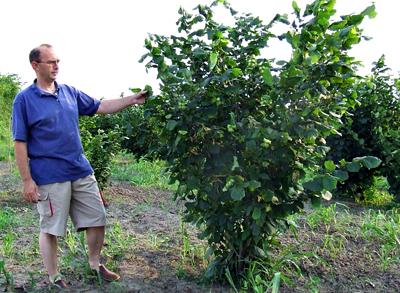
Irrigation and feeding
Hazel is classified as a moisture-loving plant. It is often necessary to water it depending on the weather. Usually 2 to 3 times a month is enough. It is impossible for the soil near the bush to dry out, otherwise it will die. In the summer, they check the soil near the hazel tree for dryness several times. When the soil at a depth of 20-30 centimeters is dry, it is dangerous for the roots of the plant.
One hazel tree in adulthood requires up to 30-50 liters of water. For irrigation, grooves are cut into which fertilizers are also applied.
Humus used as mulch can act as them. In the spring, the root circle is dug up, embedding nutritious mulch in the ground. Hazel is fed with both organic and mineral fertilizers.

It is better to determine rather than fertilize the plant in advance. In the spring, nitrogen is required to build up green mass in hazel trees. It is received by a shrub from a mullein solution in a ratio of 1: 5 or bird droppings - 1:12. During the fruiting period, hazelnuts need potassium and phosphorus. They are fed with superphosphate and potassium salt. After harvesting the nuts, a solution of wood ash is suitable for a tree as a top dressing.
Weeding and mulching
The soil around the walnut bush should not be ignored. It is necessary to ensure that the site is not overgrown with weeds, as they will not allow the culture to develop correctly. It is necessary to clean the place of growth of hazelnuts regularly from weeds, loosen the soil. At the same time, make sure that the loosening depth does not exceed 5-7 centimeters. The procedure is carried out up to 4-5 times per season, excluding the fruiting period.
Hazel mulch is prepared from peat or humus, dry straw or sawdust can be used. The layer is 7-8 centimeters thick. They try to prevent mulch from laying close to the tree trunk. Every year the old layer is removed and replaced with a new one. In wet summers, you can skip mulching hazelnuts.
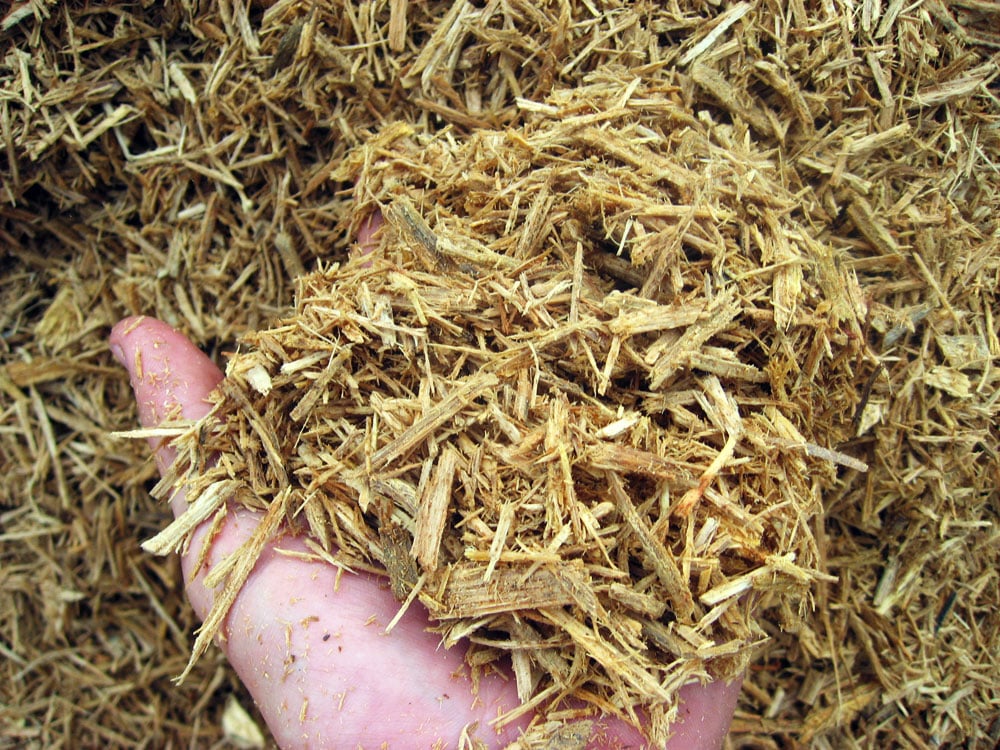
Pruning
The overgrowth of the shrub leads to thickening of the hazel crown, and, as a result, the occurrence of diseases. And the nut harvest is getting worse. Therefore, a bush is formed annually with the destruction of old shoots. The fruits are usually set on annual branches. In autumn, hazel is pruned to remove both weak and thin branches. In the spring, sanitary pruning of frost-damaged offspring, dry, sick, is needed. For abundant fruiting, you need to leave up to 8 strong shoots on the bush.
The scheme for pruning hazel is as follows: a tree or shrub is rejuvenated in the spring, and thinned out in the fall.
Shelter of young hazelnuts for the winter
Many varieties of hazel are frost-resistant, so adult specimens can not be covered for the winter. But young bushes need protection from the cold. In the first 3 years of life, while the root system of the hazel tree is strengthening, the bushes are covered with spunbond in the fall.
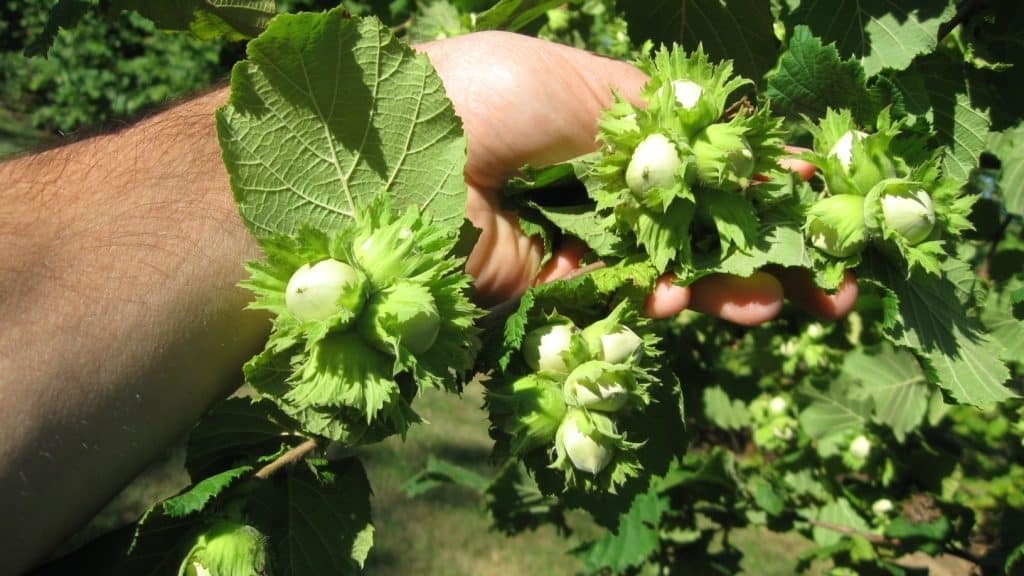
First, the branches are bent to the ground, then spruce branches or branches are applied on top. Then in 2 layers of non-woven fabric.It is necessary to shelter for the winter at a time when the air temperature drops to minus 1-2 degrees during the day.
Tree transplant
Hazel is transplanted to a new place only if:
- he is ill;
- the soil is contaminated with pathogenic microorganisms;
- you need to re-plan the site.
Hazel lives for a long time and grows well in one area, so it is not worth replanting. But if the procedure is necessary, then it is better to carry out propagation by cuttings, layering or offspring. It will not be possible to transplant the entire adult bush. And even a 3-4-year-old tree will find it difficult to take root after transplantation.

It is better to prepare cuttings in advance, place them in water or soil for rooting, and then after 2-3 years, transplant the nut into open ground.
Forest tree yield
Before buying a seedling, you need to find out what year the selected hazelnut variety bears fruit. There are types of hazel that will give the first harvest after 4 years. And for some, fruiting is possible after 8 years. Therefore, you should not worry that there are no nuts on hazelnut branches for a long time. When the bush begins to bear fruit, the nuts are green at first, and then the shell begins to grow stronger.
Their ripeness can be determined by the color of the nut. It should be dark brown and crumble when shaking the branches of the tree.
You can't eat the harvested crop right away. The nuts should dry out. They are placed in a dry and well-ventilated area. You constantly need to stir the fruits so that they dry from all sides. How long you can feast on tasty kernels, is determined by the state of the hazelnut shell. It should be firm and dark in color. Hazelnuts, its oily pulp are used for the preparation of confectionery. Walnut oil is used in cosmetology.

How to protect hazelnuts from disease and insect pests
Although hazel rarely gets sick and is attacked by parasites, you need to try to protect it from negative influences. Usually pathologies arise due to the fact that the soil is infected with fungi and bacteria, or the hazelnut seedling is acquired by the patient. It is better to carry out all preventive measures as early as possible. Therefore, whether it is possible to prevent problems in the development of hazel, they think about this in advance.
Hazel disease
From pathologies, hazelnuts often suffer from fungal infections. These diseases are associated with wet and cool weather. It is at this time that pathogenic microorganisms are especially active. It provokes the development of hazel diseases and improper care of the plant.
Powdery mildew
You can determine the disease by the white bloom on the leaves of hazel. It seems that flour has been sprinkled on them. Over time, the blackening of the leaf plate begins. Spores of the fungus spread along the stems of the bush.
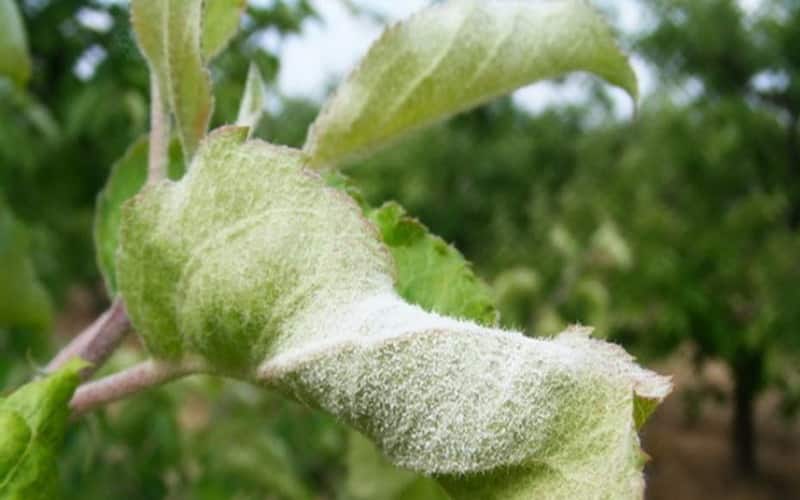
To cope with the parasite, it is necessary to tear off damaged leaves, cut off diseased branches. And the plant is sprayed with a solution of Bordeaux liquid or copper sulfate.
Rust
Orange and yellowish spots on hazelnut leaves are a sign of rust disease. At first, the spots are small with a dark border, but then they grow and lead to drying of the foliage. The danger of the fungus is that it does not allow the culture to develop normally, and the yield of nuts will be small. Treatment of hazel with fungicides will help.
White rot
This disease spreads from leaves and stems, nuts. Hazelnut tissue necrotic over time, and dried foliage crumbles. It is necessary to take measures in time so as not to lose the harvest of hazelnuts. In order to preserve the tree, the affected leaves, stems, and fruits are disposed of. The crown of hazel is sprayed with Bordeaux liquid in advance.

Bacterial burn
The disease often affects hazel and is expressed by small yellow-green spots on the leaves. Over time, the affected areas darken, but in the middle there is a light speck. When shoots are damaged, red-brown areas are visible on them, which dry out. This leads to stem breakage. Due to the defeat of bacteria, the pulp of the nuts will not form.
You can fight hazelnut burns by treating with a solution of Bordeaux mixture. The first time is sprayed with the drug when the buds open, and then during the period of ovary formation.
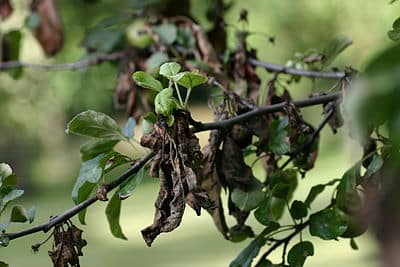
Hazel pests
The most common parasites damage those hazel, which are sucking insects or leaf-eating insects. Some feed on the insides of the nut, making holes inside the shell.
Kidney mite
It is difficult to see this miniature insect, but it causes significant harm to hazelnuts. The mite damages the nut buds, which leads to the absence of flowering, ovaries on hazel. You can notice the pest in early spring, when it leaves its wintering grounds and settles on a tree.
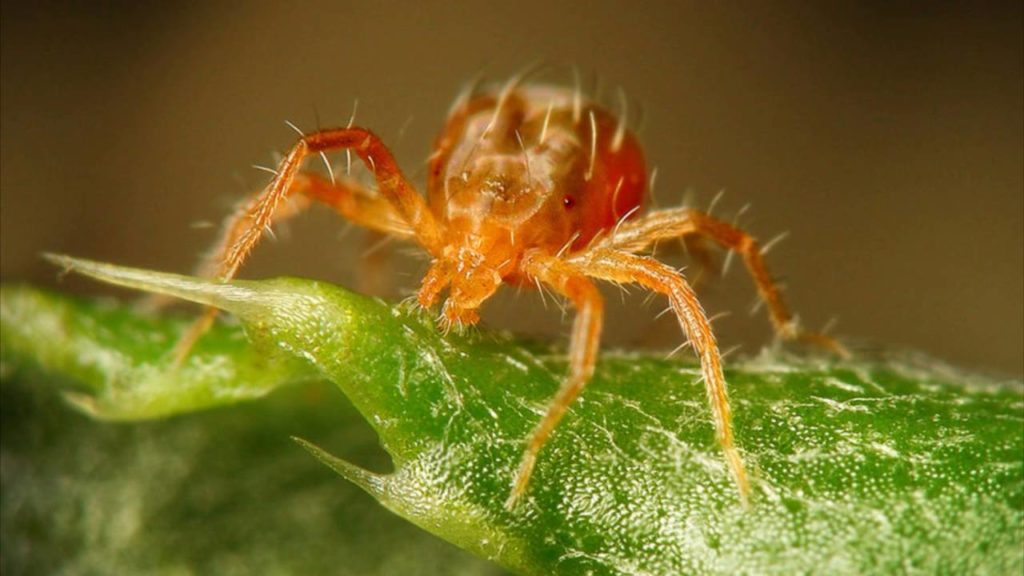
Aphid
The main carrier of diseases, aphids, also affects the walnut tree. Colonies of sucking parasites are easy to spot on the underside of leaves. You can see the results of the activity of the parasite by the deformation and twisting of hazel leaves. To combat aphids, use insecticide treatment, tobacco infusion.
Nut weevil
A beetle with a brown body and a length of 1 centimeter can be seen by the way holes appear on the fruit. Weevil larvae need to get to the tasty sweet pulp, so they make moves in the nut shell and ruin the harvest. To prevent the spread of the weevil, fallen rotten fruits are collected and disposed of. And insecticides will help in the fight against insects.
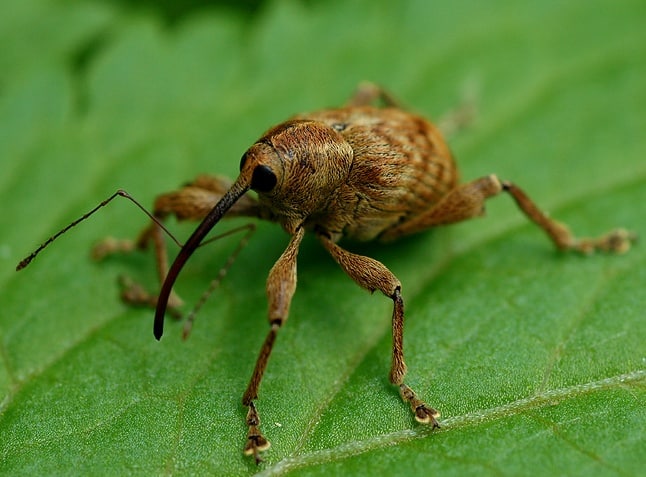
Walnut barbel
If a black beetle with yellow legs and a long mustache appears on the leaves of a hazelnut, then soon all the foliage will be in holes. These insects feed on green matter, stems, leaving the bushes naked during a massive invasion of hazel.
Nut leaf beetle
This leaf-eating insect is dangerous for the hazel plantation. Adults, along with green larvae, damage the tree. When the parasite attacks the bush, it soon remains naked. Loss of hazelnut yield from insects is up to 50%.
